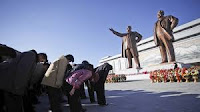The outcome of the zero-dollar rider plans
offered in a big way in November 2015 together with MediShield Life after its first anniversary
should surprise no one except perhaps the government and insurance companies. Excuse me for the dry humor.
Patients on such
plans wanted and expected a cost no object solution to their medical problem as
they felt deserving having paid higher premiums for it.
Specialist doctors
(not all) tested the beach heads on how far they can bill for their services
for such patients since their insurance are paying.
Insurance
companies devised plans to guard their beach heads whilst moderating behavior
of customers resorting to “reasonable and customary” clauses in some
cases.
Government
explored soft intervention whilst busily exploring regulatory and legal options
behind the scene to keep health care affordable, progressive qualitatively and
waiting periods reasonable.
Supply of specialist is fixed in the short
term due to limited the long post grad training periods and limited mentoring
slots. For some sub-specialties, the total number in private practice is just
slightly north of single digit.
Demand for specialist healthcare is also
fixed in the short run though it can change with demographics. Save for aesthetics
medicine and certain plastic surgery, normal people are not likely to create
new demand for specialist healthcare.
One of the primary reason why specialist
doctors can adjust their charges northward with less resistance is the mis-match between
the consumer and payer in the short run which are faceless insurance companies with their
leverage further weaken by the zero dollar clause. Consumers are cognizant that their behavior
is against their interest in the longer run as premiums would rise if
such trend continues unabated. The lack of direct impact of their behavior on their premiums is further marred by decaying group
think as higher premiums is not a direct result of their own behavior per
se but that of the group as a whole.
Do tune in for my second instalment which
will address the options and pros and cons
which will be a difficult and treacherous topic.
Peter Lye aka lkypeter
lkypeter@gmail.com Safe Harbor. Please note that information contained in these pages are of a personal nature and does not necessarily reflect that of any companies, organizations or individuals. In addition, some of these opinions are of a forward looking nature. Lastly the facts and opinions contained in these pages might not have been verified for correctness, so please use with caution. Happy Reading. Peter Lye (c) Peter Lye 2014
BABA.png)
































